What are the 4 stages of aquaculture?
Struggling to understand the complex journey from egg to market in aquaculture? It’s a detailed process where one misstep can impact your entire harvest and profitability.
Aquaculture production unfolds in four main stages: hatchery, feed mill, farm-based grow-out, and finally, processing. Each phase is critical, starting with breeding healthy fry in the hatchery and ending with preparing the mature fish for consumers. Success depends on careful management across all four stages.
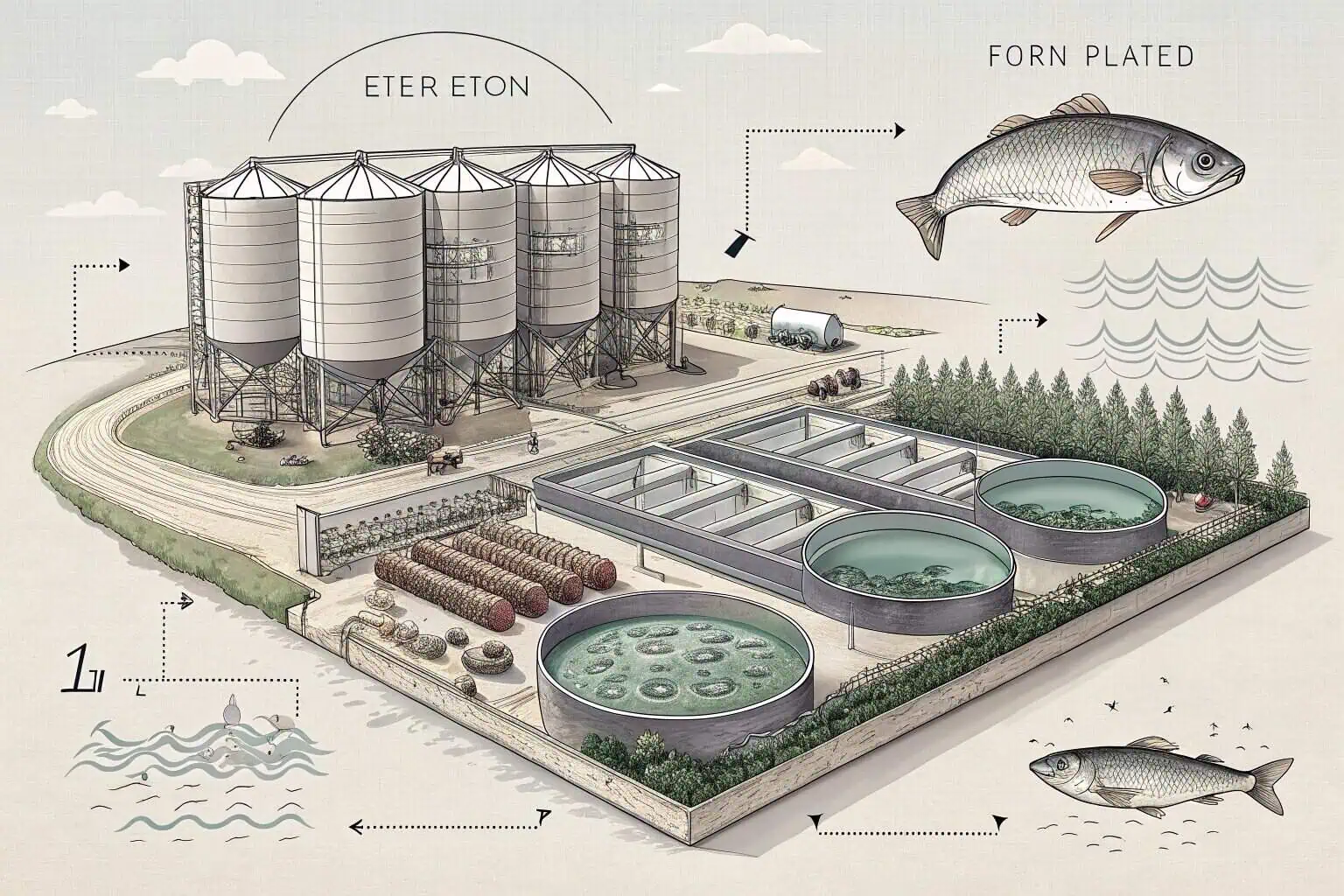
I've spent years in the aquaculture industry, and I've seen how these stages connect. It’s a fascinating and vital field, helping to feed the world while taking pressure off wild fish stocks. To really succeed, you need to understand how each part of the process works. Let's dive deeper into what makes each stage unique and essential for a successful harvest.
What are the stages of aquaculture?
Are you finding it hard to connect the dots between different aquaculture operations? Each stage has its own challenges, and overlooking one can undermine the success of the others.
The key stages are the hatchery for breeding, the feed mill for nutrition, the grow-out farm for maturation, and the processing plant for market preparation. I manage these stages closely to ensure a seamless and efficient production cycle from start to finish.
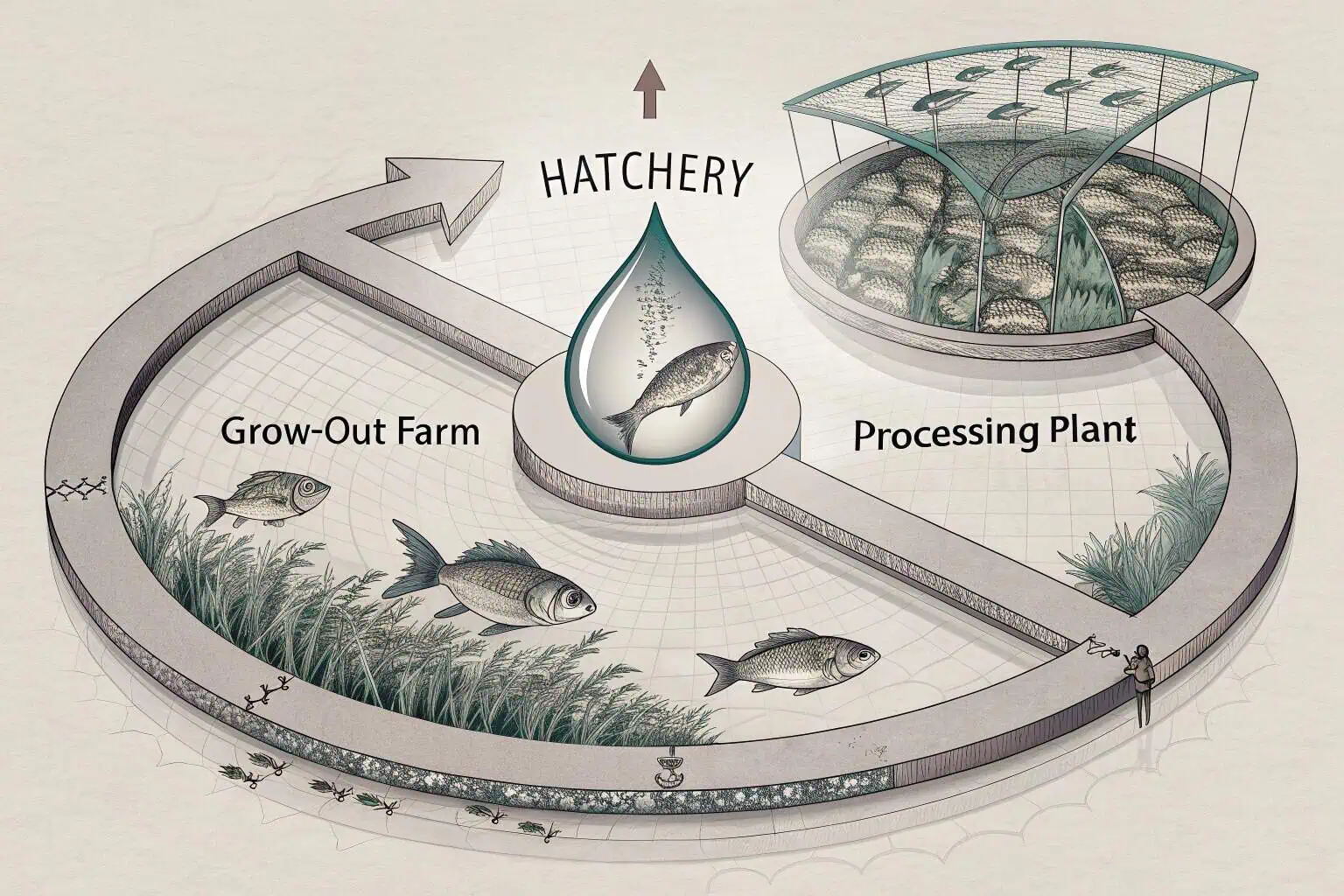
To truly grasp how aquaculture works, it helps to look at each stage in more detail. From my experience, success is all about precision and control1 at every step. I've learned that you can't afford to neglect any part of the cycle, because a weakness in one area will always show up later. Let's break down what happens in each of these critical phases and why they matter so much to the final product.
Hatchery: The Starting Point
The hatchery is where it all begins. My main job here is to create the perfect conditions for fish to breed and for their eggs to hatch. I carefully select the best parent fish to ensure strong genetics. Water quality, temperature, and light are all controlled to mimic a natural, ideal spawning environment. Once the eggs hatch, the tiny fry are extremely delicate. I have to protect them from disease and make sure they get the right initial food to give them a healthy start in life. A high survival rate at this stage is crucial for the farm's overall productivity.
| Parameter | Ideal Condition | Importance |
|---|---|---|
| Water Temperature2 | Species-specific (e.g., 25-28°C for Tilapia) | Affects metabolic rate and egg development. |
| Water Quality | High oxygen, low ammonia/nitrite | Prevents stress and disease in delicate fry. |
| Genetics | Selected from healthy, fast-growing broodstock | Ensures strong offspring and better farm performance. |
| Initial Feed3 | Live feeds (e.g., rotifers, artemia) | Provides essential nutrients for larval development. |
Grow-out: The Core Growth Phase
After the hatchery, the young fish move to a grow-out farm. This is where they will spend the majority of their lives, growing to market size. I use different systems depending on the species and location, such as ponds, net pens, or advanced recirculating aquaculture systems (RAS). My focus here is on daily management. I monitor water quality, manage feeding schedules, and watch for any signs of stress or disease. Using durable and adaptable equipment, like Bancy's collapsible fish tanks4, has been a game-changer for me, especially for managing different growth stages efficiently.
Processing: Ready for Market
The final stage is processing. Once the fish reach the right size, I harvest them and prepare them for sale. This can involve a range of activities, from simple gutting and cleaning to more complex filleting, packaging, and flash-freezing. Food safety is my top priority here. I follow strict hygiene standards5 to make sure the product that reaches the consumer is safe, fresh, and high-quality. This stage is the final link in the chain, turning all the hard work from the previous stages into a product ready for someone's dinner table.
What are the 4 types of aquaculture?
Confused by the different ways fish are farmed? With so many methods available, it can be difficult to know which one is right for your goals and resources.
The four main types of aquaculture systems I work with are ponds, net pens, flow-through raceways, and recirculating aquaculture systems (RAS). Each has unique benefits, from the low cost of ponds to the high control and sustainability of RAS.
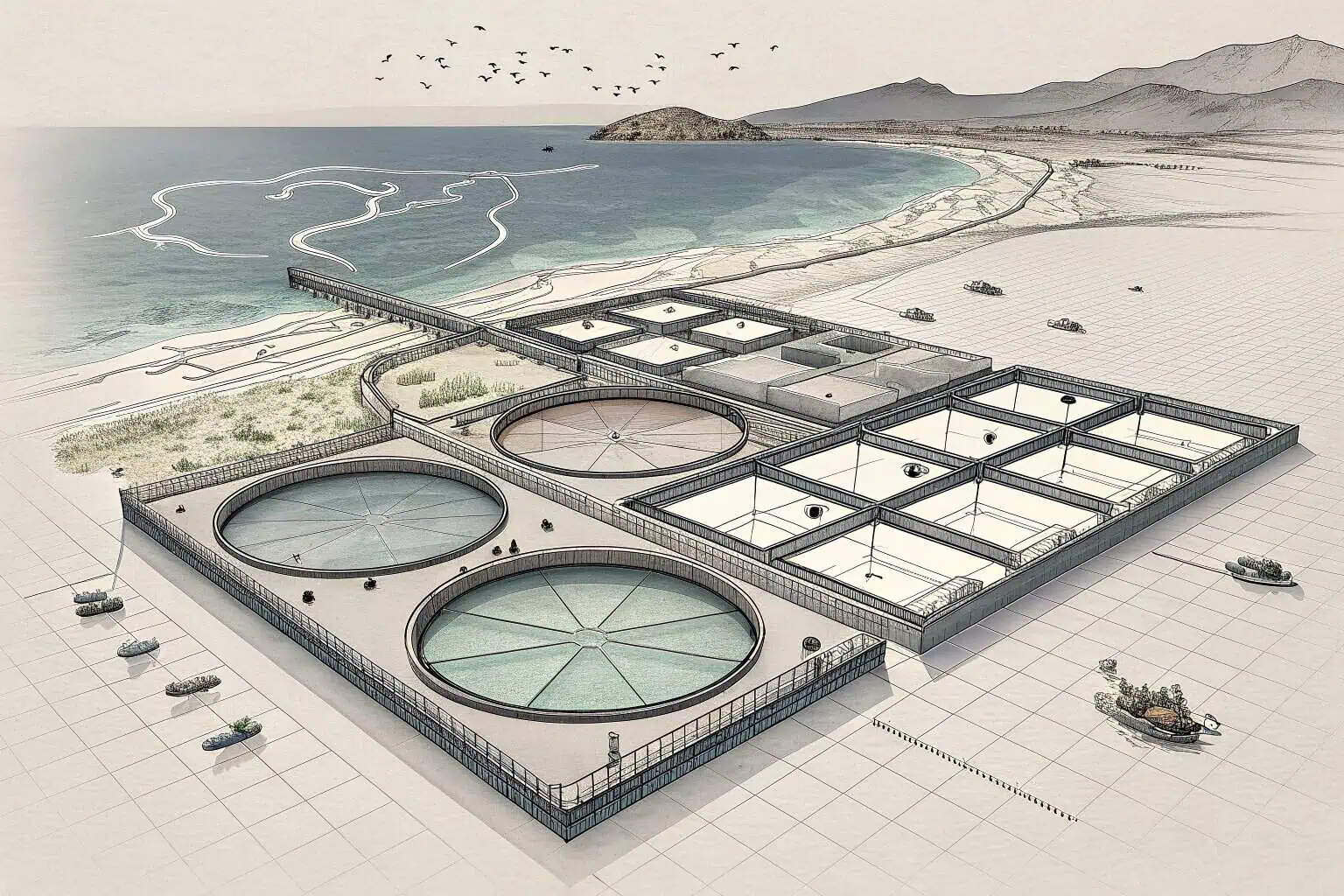
Choosing the right farming system is one of the most important decisions I make. It affects everything from my initial investment to daily operations and environmental impact. I've worked with all four main types, and each has its place depending on the species, location, and business goals. Let me share what I've learned about how these systems work and where they fit best.
Ponds and Net Pens: Traditional Approaches
Ponds are the oldest and most common method, where fish are raised in earthen enclosures. They are cost-effective and simple, which is why they are so popular for species like catfish and tilapia, especially in developing regions. Net pens are another traditional method where fish are farmed in cages in existing bodies of water like lakes or oceans. This is great for marine species like salmon, as it uses natural water bodies, but I have to be very careful with site selection to avoid environmental issues.
| Feature | Ponds | Net Pens |
|---|---|---|
| Location | Land-based, earthen enclosures | In existing water bodies (lakes, oceans) |
| Cost | Generally lower initial cost | Lower infrastructure cost, but requires boat access |
| Common Species | Catfish, Tilapia, Shrimp | Salmon, Tuna, Cobia |
| Key Challenge | Water quality management (aeration)6 | Environmental impact, escapes, predators7 |
Raceways: A Step Up in Control
Raceways are a bit more advanced. They consist of long, rectangular tanks with a constant flow of fresh water8. This system is perfect for species like trout that need clean, flowing water to thrive. The continuous flow helps to keep the water clean and allows for higher stocking densities than in static ponds. I find them easier to manage in terms of feeding and harvesting, but they do require a reliable source of fresh water, which can be a limitation in some areas.
Recirculating Aquaculture Systems (RAS): The High-Tech Future
I'm most excited about Recirculating Aquaculture Systems9, or RAS. These are land-based, closed-loop systems where water is treated and reused. This gives me almost complete control over the growing environment, from water quality to temperature. RAS uses very little water compared to other systems and can be located almost anywhere, even in cities. While the initial investment is high, the long-term benefits of sustainability10, biosecurity, and efficiency are why I believe RAS is the future of aquaculture. It's perfect for high-value species and for farming in areas where water is scarce.
What is the 4 star best aquaculture practice?
Wondering how to prove your farm is truly sustainable and responsible? It’s tough to stand out in a crowded market where everyone claims to be "green."
The 4-star Best Aquaculture Practices (BAP) certification is the gold standard. It verifies that the hatchery, feed mill, farm, and processing plant all meet high standards for environmental responsibility, social welfare, food safety, and animal health, building trust with consumers.
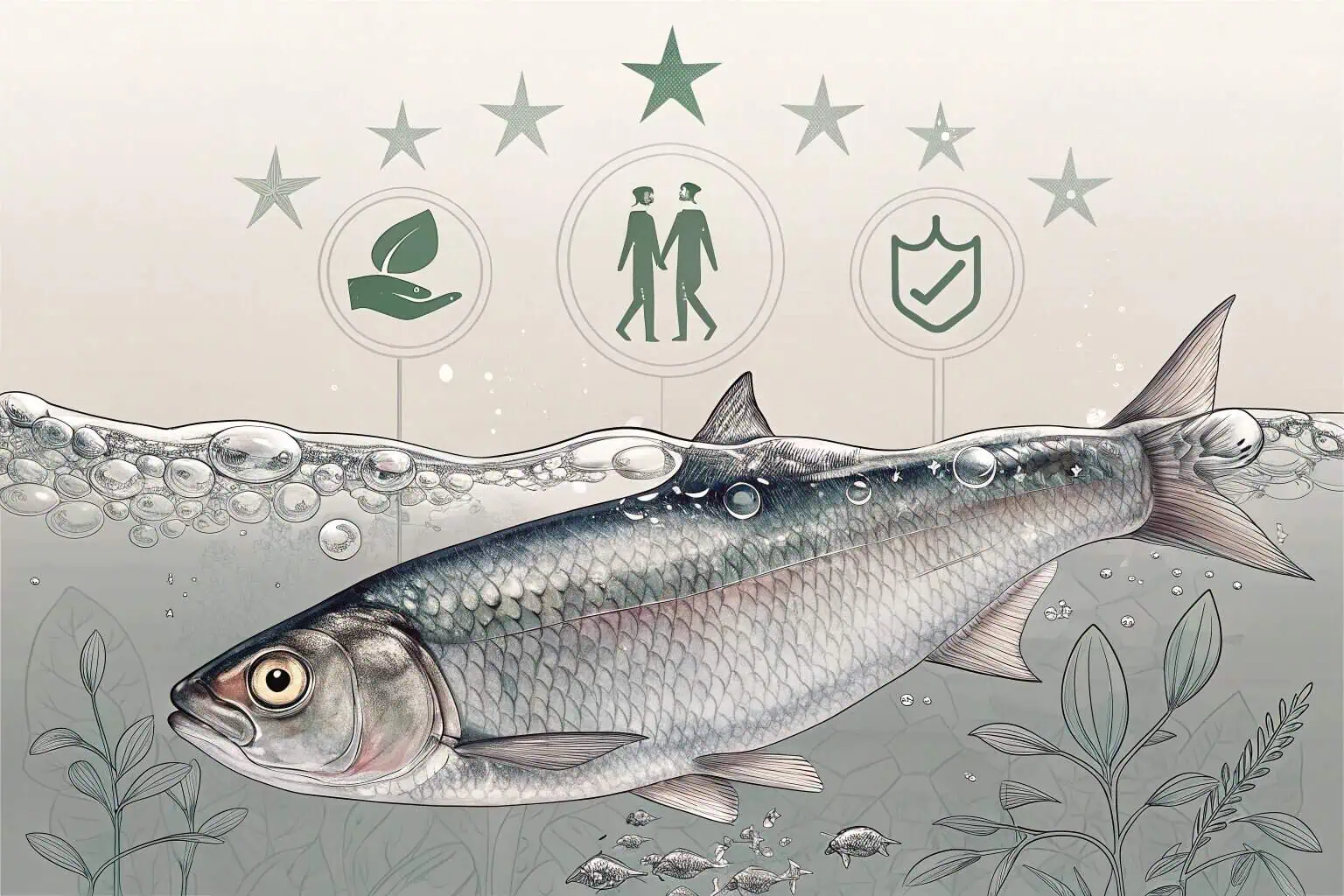
In my business, trust is everything. Consumers want to know that the seafood they eat is not only safe but also produced in a way that doesn't harm the environment or people. That's why I pursued the BAP 4-star certification11. It’s a rigorous process, but it provides credible, third-party verification of my commitment to responsible practices across the entire production chain. Let's explore what each of these four pillars of the BAP standard means for my operations.
Environmental Responsibility
This is a huge focus for me. The BAP standards require me to manage my farm's impact on the surrounding ecosystem. This includes monitoring water quality, minimizing fish escapes, and responsibly managing waste. For my land-based systems, it means ensuring that the water I discharge is clean and doesn't pollute local waterways. For my net pens, it involves careful site selection and monitoring to protect the seabed and local wildlife. It's about being a good neighbor and a steward of the natural resources I depend on.
| BAP Standard Area | My On-Farm Practice | Impact |
|---|---|---|
| Water Quality12 | Regular monitoring of effluent, proper waste management | Prevents pollution of local waterways. |
| Habitat Conservation | Careful site selection, avoiding sensitive ecosystems | Protects local biodiversity and seabed health. |
| Fish Escapes | Use of strong, well-maintained nets and enclosures | Minimizes impact on wild populations. |
| Waste Management13 | Efficient feed use, responsible disposal of sludge | Reduces nutrient loading in the environment. |
Social Welfare
This pillar ensures that I treat my employees fairly. It covers everything from workplace safety and fair wages to working hours. I'm proud to run an operation where my team feels safe, respected, and valued. The BAP standards help me formalize this commitment, ensuring that my farm contributes positively to the local community by providing good jobs and operating ethically. It’s not just about farming fish; it’s about building a sustainable business14 that supports people.
Food Safety and Animal Health
These two pillars are closely-linked. The BAP certification requires me to have robust systems in place to ensure the seafood I produce is safe for consumers. This includes traceability15, so I can track my product from the hatchery all the way to the store shelf. It also covers animal health and welfare. I work to provide a low-stress environment for my fish, manage stocking densities carefully, and use responsible practices for disease prevention and treatment. Healthy fish lead to a safe, high-quality product.
What are the 4 stages of a fish?
Do you know how a fish's needs change as it grows? Providing the right care at the wrong time can lead to stress, slow growth, and lower survival rates.
A fish goes through four main life stages: egg, larva, juvenile (or fry), and adult. I tailor my farming environment and nutrition at each stage, such as using protected hatchery tanks for larvae and larger, durable grow-out ponds for adults.
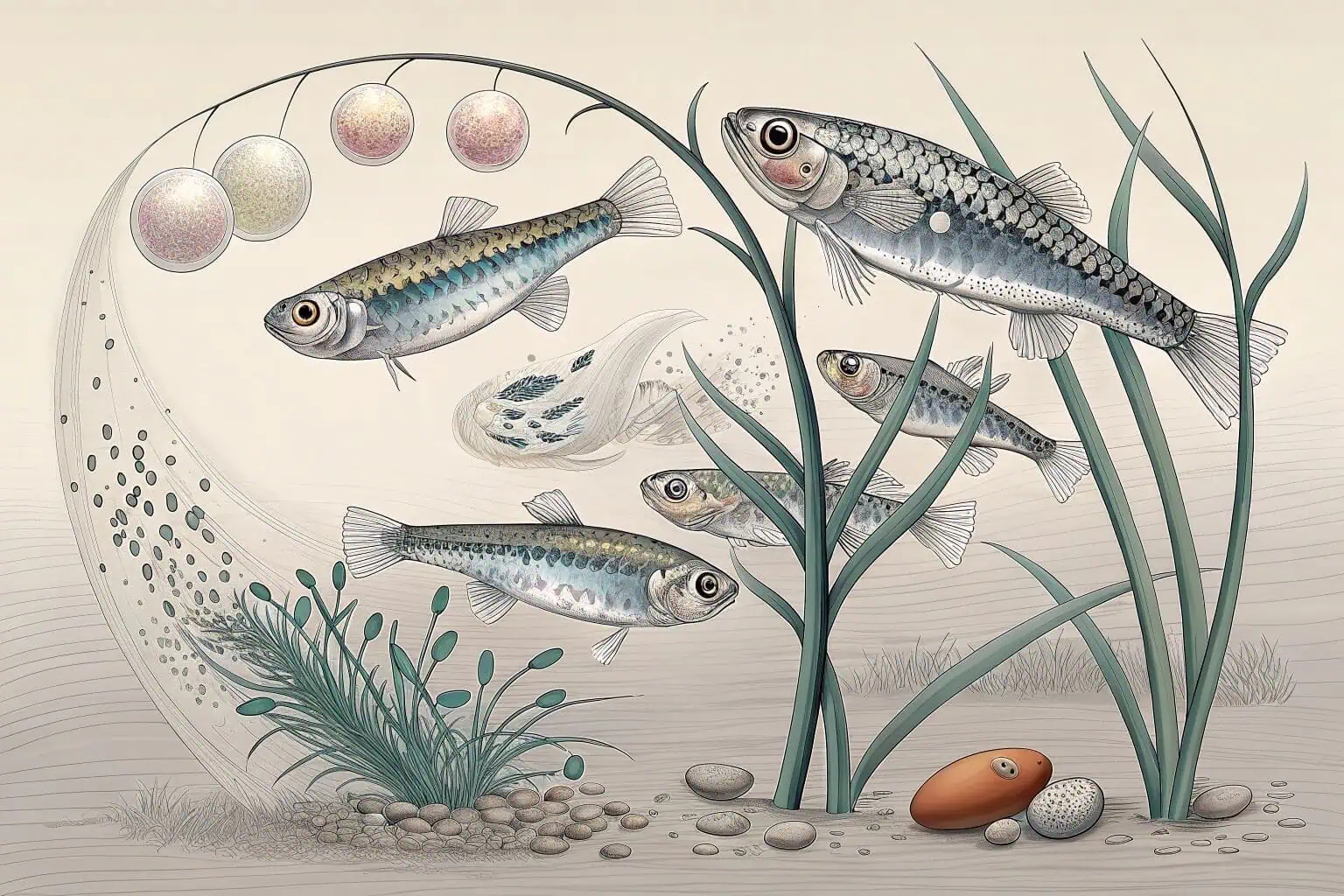
Understanding the fish life cycle16 is fundamental to my work. I can't just put fish in a tank and hope for the best. Each stage has very specific requirements for its environment, nutrition, and care. By aligning my aquaculture practices with these natural stages, I can significantly improve growth rates, health, and overall success. Let me walk you through how I manage each of these four critical life stages on my farm.
Egg Stage
This is the most vulnerable stage. The eggs are sensitive to temperature, oxygen levels, and physical disturbance. In my hatchery, I keep them in specialized incubators with carefully controlled water flow and quality. My goal is to maximize the hatch rate. I protect them from predators and disease, ensuring that as many eggs as possible develop into healthy larvae. This stage requires precision and constant monitoring.
| Factor | Requirement | Reason |
|---|---|---|
| Temperature | Stable and species-specific | Critical for embryonic development speed and success. |
| Oxygen17 | High dissolved oxygen levels | Essential for embryo respiration. |
| Water Flow | Gentle and continuous | Delivers oxygen and removes waste products. |
| Protection18 | From light, predators, and disease | Maximizes hatch rate and ensures healthy larvae. |
Larval Stage
Once the eggs hatch, the fish are known as larvae19. They are still very small and delicate, and their first few days are critical. They have a yolk sac that provides their initial nutrition, but soon they need to start feeding on their own. I provide them with tiny, specialized feeds, like rotifers or artemia, that are easy for them to eat and digest. The water quality in the larval tanks has to be perfect, as they are highly susceptible to infections.
Juvenile Stage
As the larvae grow, they become juveniles, often called fry or fingerlings. At this point, they are more resilient but are growing rapidly and need a lot of high-quality food. I transition them from live feeds to specially formulated dry pellets that are rich in protein and other nutrients. This is also the stage where I might move them from the hatchery to larger nursery tanks or ponds. Using equipment like Bancy's collapsible tanks20 gives me the flexibility to create the right-sized environment for these fast-growing fish, reducing stress and promoting healthy development.
Adult Stage
This is the final grow-out stage, where the fish mature to market size. Their nutritional needs change again, and I adjust their feed formulation accordingly. They need plenty of space to swim and grow, so I manage stocking densities carefully. I continue to monitor water quality and protect them from disease, but the focus shifts to maximizing growth and feed conversion efficiency21. This is the longest stage, and it's where all the careful work from the earlier stages pays off in a harvest of healthy, market-ready fish.
Conclusion
In the end, mastering aquaculture's four stages—hatchery, grow-out, feed, and processing—is key. Proper management at each step ensures a healthy, sustainable, and profitable harvest for any fish farmer.
-
Exploring this topic reveals how meticulous management can lead to successful aquaculture operations and better yields. ↩
-
Understanding the ideal water temperature is crucial for optimizing fish growth and health. ↩
-
Exploring the best initial feeds can significantly enhance larval development and survival rates. ↩
-
Discover how Bancy's innovative tanks can revolutionize your fish farming practices and improve management. ↩
-
Exploring hygiene standards will help you learn how to maintain high-quality fish products and prevent contamination. ↩
-
Understanding water quality management is crucial for successful aquaculture, ensuring healthy fish and sustainable practices. ↩
-
Exploring solutions for environmental impact and fish escapes can enhance sustainability and protect marine ecosystems. ↩
-
Understanding the advantages of constant water flow can enhance your aquaculture practices and improve fish health. ↩
-
Explore this link to understand how RAS can revolutionize aquaculture with sustainability and efficiency. ↩
-
Discover insights on sustainability in aquaculture and its importance for future food security. ↩
-
Understanding BAP 4-star certification can enhance your knowledge of responsible seafood practices and consumer trust. ↩
-
Exploring this resource will provide insights into effective strategies for enhancing water quality on farms. ↩
-
This link will offer valuable information on innovative waste management techniques that can benefit agricultural sustainability. ↩
-
Discover strategies for creating a sustainable business that benefits both the environment and the community. ↩
-
Exploring traceability in seafood helps ensure product safety and quality, which is essential for consumers and producers alike. ↩
-
Understanding the fish life cycle is crucial for effective aquaculture practices and improving fish health. ↩
-
Understanding the role of oxygen in embryo respiration can enhance hatch rates and improve aquaculture practices. ↩
-
Exploring this topic can provide insights into maximizing hatch rates and ensuring the health of larvae. ↩
-
Understanding fish larvae is crucial for successful breeding and ensuring their survival in aquaculture. ↩
-
This link will provide insights into how collapsible tanks can enhance fish farming efficiency and reduce stress. ↩
-
Understanding feed conversion efficiency is crucial for optimizing fish growth and reducing costs in aquaculture. ↩